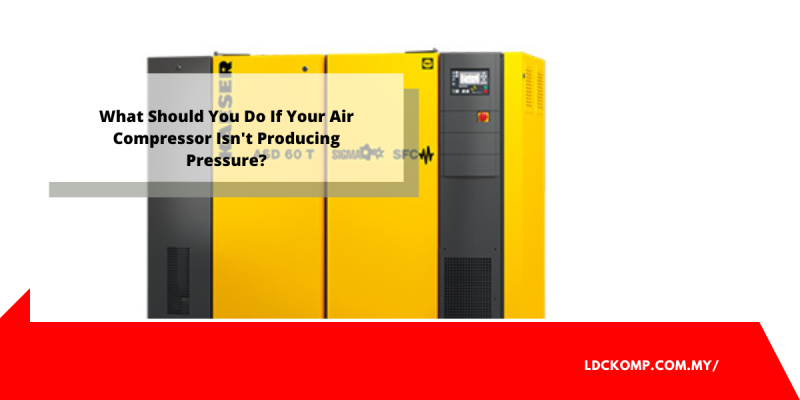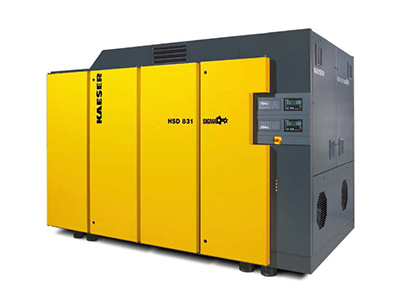Typically, industrial buildings use compressed air systems at 120 PSI. All compressor operators should adjust pressure to suit their specific applications, keeping in mind that the industry standard guideline is that every 2 PSI increase needs roughly 1% of total input power.
Your application suffers when your compressed air system fails to create sufficient pressure for a certain application, whether it is vehicle body painting and detailing or powering a city-wide transit network. A lack of sufficient pressure might lead an air compressor to continue for extended periods of time without reaching its typical cut-out pressure. Overheating can be caused by a poorly maintained compressor and inadequate ventilation. In the case of single-phase motors, the start and run capacitors might overheat and fail as well. Simultaneously, the inefficiencies of operating a compressor at low pressure might result in excessive oil carryover, leading in significant time and shop income losses.
It’s critical to understand how to properly size your compressed air system to maintain desired pressure levels and how to troubleshoot it if your machine’s pressure plateaus or falls below your desired operational pressure to maximize operational effectiveness and energy efficiency while protecting your machine from damage (PSI).
- PERFORM A PUMP UP TEST.
A pump up test can reveal how long it takes your compressed air system to create pressure. To begin the test, empty the air tank. Then, at discharge, stop the service valve and time how long it takes your compressor to reach your target PSI from 0.
Of course, the maximum pressure of a machine may vary depending on the model, so if you’re unsure of your cut-off setting or the time frame in which a given pressure level should be attained, contact your distributor.
- MAINTAIN CLEAN FILTERS.
First, inspect your air intake filter. Loosen the wingnut, then remove the housing cover and examine the filter. Check that it is clean and free of dirt and accumulation.
Maintain your air compressor on a regular basis to ensure that all of the filters are clean. Replace filters as needed or as required by your environment.
- EVALUATE AIR DEMAND AND CHECK FOR LEAKS
The first — and easiest — actions are to ensure that your air demand parameters are set to the optimum amount and to check for any leaks. Leaks are a typical cause. According to Efficient Plant specialists, facilities with no adequate leak control protocol lose an average of 30% to 50% of their total compressed air production due to leaks.
Inspect your air tank for leaks and repair it if necessary. Check that the air tube fittings are properly tightened.
- INSPECT ALL VALVES IN YOUR COMPRESSED AIR SYSTEM.
Examining your machine’s valves is the next step in troubleshooting a compressed air system that isn’t producing enough pressure. Check that the input valve can completely open and that the drain valve at the bottom of the air tank is properly shut.
You may also check for oil passthrough by opening your drain valve and inspecting it for oily residue. While any oil or lubricant-based compressed air system may have some oil carryover, the amount of oil in the air tank should be kept to a minimum. High amounts of oil carryover make it impossible for a compressor to develop pressure.
After you’ve checked the input and drain valves, ensure the safety valve isn’t leaking or having any issues. This is especially critical since the safety valve opens to alleviate excess air pressure if the pressure switch fails to turn off the compressor at the set-point pressure. A malfunctioning safety valve might impair a machine’s capacity to produce the necessary pressure.
The most common cause of a reciprocating compressor’s inability to reach sufficient pressure is a faulty reed valve, which can exhaust air out of the air inlet on single stage models or through the intercooler safety valve on two-stage piston compressors instead of passing it through the intercooler, the second stage piston, and the discharge. If your machine is plateauing between 40-80 PSI, this might be an indication of a reed valve problem. The reed valve is located at the top of each cylinder. Loosen the cap screws, remove, dismantle, and replace the reed valves and gaskets, then connect the head plates to the cylinder.
- INSPECT THE BELT CONDITION.
If your compressor is belt-driven, a faulty belt might be the blame for the low pressure. Make sure your machine is switched off and the electricity is unplugged before inspecting the belt. Remove the belt guard’s back part. Loosen the motor mounting nuts to tighten or replace the belt if required. Slide the motor in the direction of the pump, carefully remove the belt from its pulleys, replace the belt(s), and reposition the motor. Tighten the motor mounting nuts and, if necessary, adjust the belt tension. Replace the belt guard.
- CHECK THE PUMP RINGS.
Effective pump rings seal the air in the cylinders, prevent excess oil from passing downstream, and are critical in ensuring an air compressor’s ability to build pressure — if the pump rings are worn, the pump will be unable to compress air effectively, reducing the volume of air the pump can produce significantly. If this is the case, the pump should be rebuilt or replaced.
Check the valve plates to ensure they are properly sealing if both the pump and the pump rings appear to be working properly.
- INSPECT MOTOR CAPACITORS
If the capacitors in your compressed air system aren’t working properly, the motor may not receive enough power to start the single-phase motor. Problems with motor capacitors prevent a machine from reaching normal operating speed. A faulty winding or phase imbalance in a three-phase motor may cause the compressor’s breakers (fuses) to trip.
To handle motor capacitor issues, it’s ideal to work with a trained electrician who can complete a thorough machine audit and inspect the capacitors for leaking, swelling, or cracking. An electrician can propose whether or not capacitors should be changed following an audit.
- INSPECT YOUR AIR/OIL SEPARATOR.
After monitoring the oil levels on oil-cooled injection rotary type compressors, measure the differential pressure across the air/oil separator. If the air/oil separator becomes contaminated, blocked, or broken, it may prohibit the separation of oil and air within the compressor, limiting the machine’s capacity to achieve the cut-out pressure level and raising running expenses. Replace the air/oil separator as needed.
For more information about air compressor malaysia supplier, please visit https://www.ldckomp.com.my/



